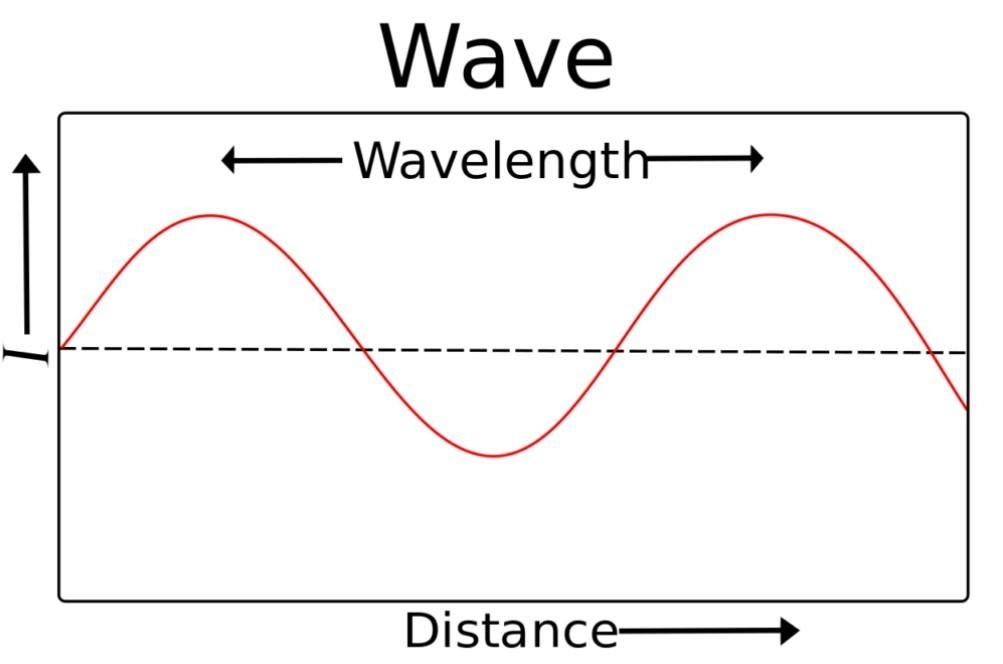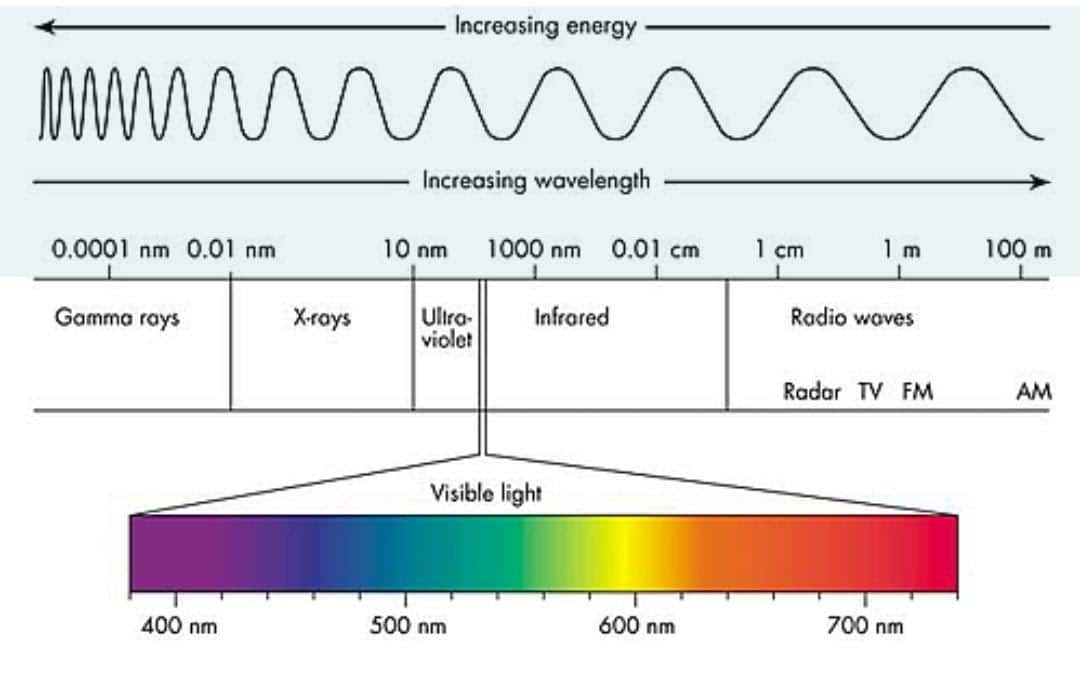Unit of Wavelength - Definition, SI Unit, FAQs
Introduction:
Wavelength is a length of one cycle of a wave that is the distance. The SI unit of wavelength is metre (m) and wavelength symbol is λ. In this article we will learn in detail about wavelength unit, what is the unit of wavelength and how do you measure wavelength.
What is wavelength and the unit of wavelength?
Let us define wavelength in physics, wave is a theoretical representation of energy propagating in a medium or vacuum. This kind of energy is also called a disturbance that propagates in a certain medium, whether it is a solid, liquid or gas. For example, sound energy. Only a small amount of energy does not require the medium to move, so it can move in a vacuum. For example, light energy.
JEE Main/NEET 2027: Physics Important Formulas for Class 10
NEET 2025: Mock Test Series | Syllabus | High Scoring Topics | PYQs
JEE Main: Study Materials | High Scoring Topics | Preparation Guide
JEE Main: Syllabus | Sample Papers | Mock Tests | PYQs

We know, transverse wave travel in consecutive successive crest and trough while longitudinal wave travel in successive compression and rarefaction.
In case of transverse wave the length of successive crest and trough is called its wavelength while in case of longitudinal wave the length of successive compression and rarefaction is called its wavelength.
Wavelength is the length of a wave from the maximum point of a peak to the maximum point of the adjacent peak or the lowermost point of a valley to the lowermost point of adjacent valley.
It is denoted by a symbol called lambda (λ) and unit of lambda is metre. According to the definition given, we know that wavelength is length, so the SI unit of wavelength should be equal to the SI unit of length. We know that the SI unit of length is meters, so the SI unit of wavelength is also meters.

Light is a form of electromagnetic radiation, a field associated with light energy. Light is a very general term because it can be anything from a simple light bulb to a microwave oven. Some characteristics of light include wavelength and frequency. Frequency (usually measured in Hertz) is the number of waves in a given time. The wavelength (usually measured in nanometres) is the distance between two points in a wave. Frequency and wavelength have a positive and negative relationship. For example, if two waves are moving at the same speed, they are negatively correlated. Waves of shorter wavelengths have higher frequencies, and longer wavelengths have lower frequencies. Frequency and wavelength may be related to the speed of light. Light moves at a speed of 3.00 x 108 meters per second. The speed of light, frequency and wavelength can all be expressed by an equation. λ = c, where c is the speed of light, stands for frequency and wavelength sign is λ. As mentioned earlier, this is an inverse relationship, because if one value goes up, the other goes down. By means of this elementary equation, you can also solve for wavelength and frequency to obtain their equations.
Just as wavelength and frequency are associated to light, they are also associated to energy. The tinier the wavelength, the greater the frequency and the more the energy. The lengthier the wavelength, the lesser the frequency and the lesser the energy. The energy equation is E = h where E signifies energy, h signifies Planck's constant (6.626 x 1034 J·s), and ν signifies frequency. The energy equation is a direct relationship between frequency and energy, because the higher the frequency, the higher the energy. This is likely since h is a constant.
Also read -
- NCERT Solutions for Class 11 Physics
- NCERT Solutions for Class 12 Physics
- NCERT Solutions for All Subjects
Other wavelength units:
As mentioned earlier, the SI unit of wavelength is meters. Some wavelengths are very short, and some wavelengths are very long. Solving various numerical problems also requires larger and smaller unit lengths. Therefore, we use an exponent of 10 to measure large properties, while a negative exponent is used to measure shorter wavelengths.
Following are the all units of wavelength:
- Kilometre, abbreviated as Km and is equivalent to 103m.
- Mega metre, abbreviated as Mm and is equivalent to 1000000 m or 106 m.
- Gigametre, abbreviated as Gm and is equivalent to 1000000000 m or 109m.
- Terametre, abbreviated as Tm and is equivalent to 1012 m.
- Petametre, abbreviated as Pm and is equivalent to 1015 m.
- Decimetre, abbreviated as dm and is equivalent to 10-1 m.
- Centimetre, abbreviated as cm and is equivalent to 10-2 m.
- Millimetre, abbreviated as mm and is equivalent to 10-3 m.
- Micrometre, abbreviated as m and is equivalent to 10-6 m.
- Nanometre, abbreviated as nm and is equivalent to 10-9 m.
Related Topics Link, |
Wavelengths of different waves in meters
Light is a type of energy that travels in waves, it is made when matter is heated up or gains energy. Excess energy is released in part as light, this energy is called electromagnetic radiation. When we talk about light we usually mean visible light which is the light we can see with our eyes but there are more types of electromagnetic radiation that are invisible to us including radio wave, micro wave, x-rays and gamma rays. Scientists can detect and measure invisible radiation by special tools. Collectively with visible light all these kinds of radiation are called the electromagnetic spectrum. All electromagnetic radiations moves in waves but unlike types have unlike wavelengths. The wavelength of electromagnetic emission or light is associated to how ample of energy it has.

Now let us take a look at wavelength of these electromagnetic radiation here wavelength is measured in m and nm.
Gamma rays: Gamma rays have the shortest wavelength. It is less than 0.001 nanometres or 1012 meters.
X-ray: The wavelength range of X-ray is 0.001-10 nm.
Ultraviolet: The wavelength range of ultraviolet is 10 400 nm.
Visible light: The wavelength of visible light is within the range of 400 700 nm.
Infrared: The infrared wavelength range is 700 nm to 1 mm.
Radio waves: Radio waves have the lengthiest wavelength. Its length exceeds 1 mm or 0.001 meters.
Also Read:
- NCERT Solutions for Class 11 Physics Chapter 15 Waves
- NCERT Exemplar Class 11 Physics Solutions Chapter 15 Waves
- NCERT notes Class 11 Physics Chapter 15 Waves
How to measure wavelength?
To understand wavelength measurement and to know clearly about how to measure wavelength let us take an example;
Calculate the wavelength of radiation with frequency of 5 X 1014 Hz.
We know,
λ=c/v =speed of light/frequency
= 3 X 108/ 7.22 X 1014= 4.13 X 10-7m
Also check-
- NCERT Exemplar Class 11th Physics Solutions
- NCERT Exemplar Class 12th Physics Solutions
- NCERT Exemplar Solutions for All Subjects
NCERT Physics Notes:
Frequently Asked Questions (FAQs)
The wavelength will decrease.
λ=c/v =speed of light/frequency
= 3 X 108/ 7.22 X 1014= 4.13 X 10-7m
Wavelength and frequency of a wave are inversely proportional. As wavelength increases, the frequency decreases.
Meters and Hertz are the SI unit of wavelength and frequency respectively.
The wavelength range of X-ray is 0.001-10 nm.
Also Read
25 Nov'24 02:09 PM
20 Nov'24 05:36 PM
19 Nov'24 02:33 PM
12 Nov'24 10:05 PM
12 Nov'24 07:12 PM
25 Sep'24 03:49 PM
24 Sep'24 10:06 PM
24 Sep'24 06:25 PM
24 Sep'24 04:58 PM